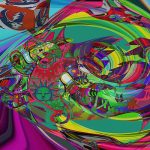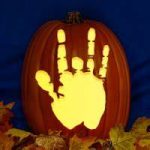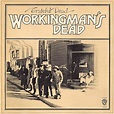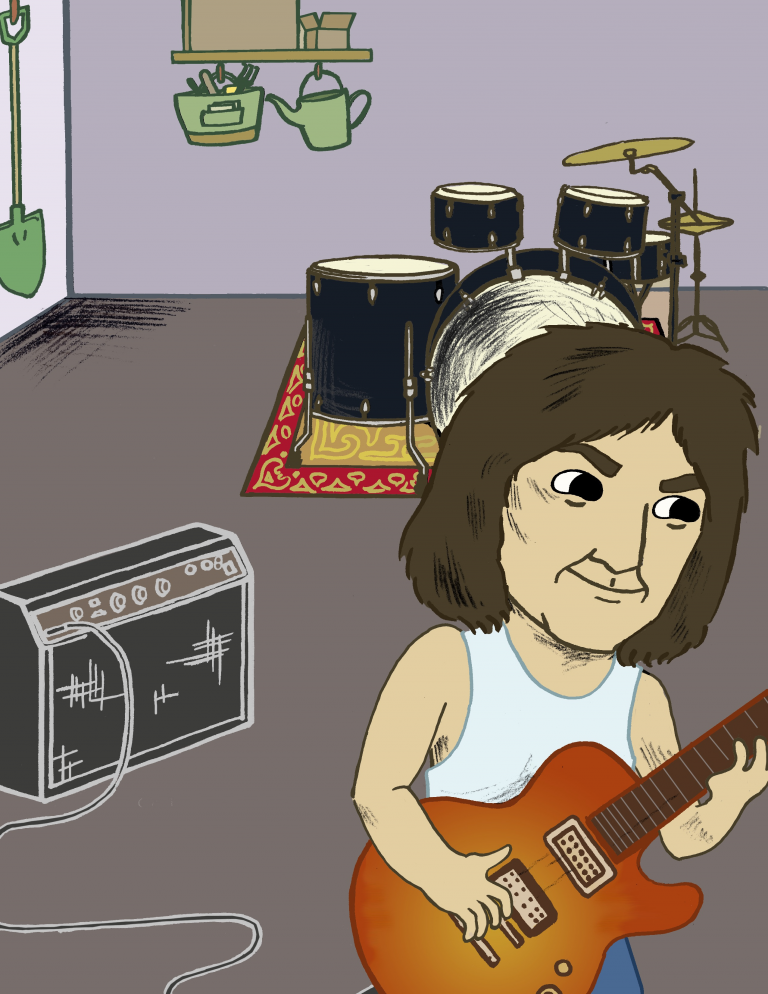Grateful Dead (Pt.II)

This Month I will continue to feature (back by popular demand) The Grateful Dead. Last month was devoted to their basic history and profiled the “Deadheads” and their unique counter-culture. In this blog article, we explore more from the musical mind of the legendary Jerry Garcia. Then, will break down the classic Workingman’s Dead album and the classic Grateful Dead song “Uncle John’s Band.” We will also take a quick peak at the Dead & Company and how they continue to bring the Grateful Dead’s music to Dead fans of old and a whole new generation!
The Musical Mind of Jerry Garcia

Jerry Garcia (1942-1995)
Jerry Garcia is unquestionably one of rock music’s most iconic figures and one of the greatest musicians of the 20th century! In his early musical development, Garcia had all but mastered the banjo and bluegrass music in general. Garcia stated “I put my first real energy in music into the five-string banjo. I slowed the records down and painstakingly listened to every lick and worked them out. When I went to electric guitar I knew how to learn it. And my taste in music is kind of informed by the banjo…I like to hear every note. I like that clarity and separation of notes.”
As for the environment of the early 1960’s, Garcia came to realize that psychedelics were a very important experience in his personal and musical life. Jerry said that “psychedelics were part of music for me insofar as I was a person who was looking for something and psychedelics and music are both part of what I was looking for. They fit together, although one didn’t cause the other.”
Jerry was influenced by so many different styles and genres and styles of music. This included the previously mentioned bluegrass to folk songs to the blues to jazz and avant-garde music to rock ‘n’ roll. Garcia stated “I’ve been influenced a lot by Coltrane, but I never copped his licks or sat down, listened to records and tried to play his stuff. I’ve been impressed with that thing of flow and of making statements that to my ears sound like paragraphs.” Add to that, Jerry’s ability to always spin both musical ideas and concepts together. Part of his genius was about recognizing the possibilities and his seemingly limitless enthusiasm for creative expression!
By the late 1960’s, both Garcia and lyricist Robert Hunter were becoming one of musics’ great songwriting teams (rivaled by the likes of Lennon/McCartney, Richards/Jagger and the masters of Tin Pan Alley). Garcia directed his musical energy to honing his instrumental voice and singing voice with clear melodic folk and country-styled songs but with many that could also “rock-out” on command. So many of the Garcia/Hunter songs were both plain, yet eloquent and simple in their musical construction and still emotionally expansive.
Jerry’s staggering guitar skills were a product of his excessive practicing and his unique stylistic development (early country fingerpicking and bluegrass banjo virtuosity). But his inherent melodic sensibility can be heard in so many of his solos that sound like they are extensions of the melody. It sounds as if he is never done composing even when he is soloing.
And one other factor would inform Garcia’s musical brilliance. His incredible work ethic! Garcia said “you can’t play the way the Grateful Dead plays without working at it…it’s not something that just happened to us. It didn’t happen overnight, either. There was a long, slow process that brought that into being.”
The pure musical genius of Jerry Garcia
Classic album – Workingman’s Dead 
Workingsman’s Dead (like soon to come American Beauty) moved the Dead away from their earlier psychedelic experiments to more of a country and folk influenced American style that featured the great songwriting of Jerry Garcia and the lyrical brilliance of Robert Hunter. All of the songs were written by Garcia and Hunter with the exception of “Cumberland Blues” that added bassist Phil Lesh’s input. “Easy Wind” that was solely written by Hunter. Workingman’s Dead, gained some popularity and went to number 27 on the charts. With pianist/organist Tom Constanten gone, Ron “Pigpen”McKernan went back to playing the Hammond B-3 organ while Keith Godchaux soon joined playing acoustic piano. On both American Beauty (profiled in last month’s blog post) and Workingman’s Dead, the band returned to a more rootsy, acoustic sound. Influenced by Bob Dylan’s John Wesley Harding album, Crosby, Stills, and Nash, and The Band’s first two albums, The Dead created some of their most enduring classics; “Truckin,” “Casey Jones,” and “Uncle John’s Band.”
The psychedelic studio experimentation of their 3rd album Aoxomoxoa, had left the band in debt and great musical conflict with their record label. Different from their musical reputation as an exploratory free-form rock band, Workingman’s Dead featured songs in a country, folk, and the Americana roots style with an overall very chill vibe. Garcia stated “when we go into the studio next time, let’s try a real close-to-the-bones approach, like the way they record country and western records-a few instruments, relatively simple and easy-to-perform songs….it was a chance to expose a side of us that we hadn’t exposed very much.” Garcia and Weir focused more on their singing and vocal harmonies. Garcia noted the influence of the concept of Workingman’s Dead came both from his pairing with lyricist Robert Hunter, as well as the band’s friendship with Crosby, Stills, and Nash. “Hearing those guys sing and how nice they sounded together, we thought, ‘We can try that. Let’s work on it a little’.” Hunter had joined the band on the road for the first time, resulting in a period of faster song development.
Unlike the psychedelic, electrified music for which the band had become known, the new songs took a new direction, reviving their folk-band roots. Drummer Bill Kreutzmann stated that the musical direction of the album was influenced by the Bakersfield sound (a subgenre of country music influenced by rock ‘n’ roll). Kreutzmann said that “We tried to be like a Bakersfield band… we held to our psychedelic roots. Workingman’s Dead was all about discovering the song.”
Side one opened with “Uncle John’s Band,” “High Time,” “Dire Wolf,” and “New Speedway Boogie.” The Dead challenged themselves by focusing on more demanding vocal arrangements on sublime ballads such as “Uncle John’s Band” and the blues-inspired song “High Time.” The Grateful Dead were known as a better live band but here the interplay between the members on this recording sound as close to a live experience as they would ever achieve in the studio. Listen to the musical pedal steel guitar and shuffling drums on “Dire Wolf.” “New Speedway Boogie” referred to the violence at the Altamont Speedway.
Side two opened with “Cumberland Blues,” “Black Peter,” “Easy Wind,” and “Casey Jones.” You can hear the bluegrass rhythms and country-influenced harmonies on “Cumberland Blues.” On “Easy Wind,” Pigpen’s vocals sound pure and natural. “Casey Jones,” at first seems to be condoning the use of cocaine. However, it was really all about people that were going through hard times. Country classics like “Dire Wolf” and “Cumberland Blues” found a permanent home in the Dead repertoire for decades to come.
Garcia had recently purchased a pedal steel guitar and looked to add its sound to his newer compositions. Bassist Phil Lesh explained, “Just as with any other instrument he picked up, he made it sing. The main impetus for this development was the nature of the new songs Hunter and Jerry had been writing. Many of them had a decidedly country flavor (‘Dire Wolf,’ ‘Friend of the Devil,’ ‘High Time,’ ‘Casey Jones,’ ‘Ripple’), and Jerry began using the new axe on these as they were slotted into the set lists.
Bobby Weir also began bringing in covers of his favorite country tunes and some originals in that vein, so we were starting to see a trend developing. Songs such as “Uncle John’s Band,” “High Time,” and “Cumberland Blues” were brought to life with soaring harmonies and layered vocal textures that had not previously been a part of the band’s sound.” According to the 1992 Dead oral history, Aces Back to Back, Mickey Hart stated that “Steven Stills and David Crosby really turned Jerry and Bobby onto the voice as the holy instrument. You know, ‘Hey, is this what a voice can do?’ That turned us away from pure improvisation and more toward songs.”
There is no doubt that the band took a risk by abruptly changing musical directions to create Workingman’s Dead, a very pure Americana album that helped to define the Americana genre itself. The band refined their focus and kept to the core members without adding any musical guest guitarists or keyboard players. But the primary focus of Workingman’s Dead is on the songs all of which reflect the band’s growing interest in their folk, blues and country roots, and not the jamming or psychedelia. They’d get a bit more elaborate, less raw, on the next album American Beauty. But this is the album that set a new course of development for the band. It’s a landmark and one of their essential studio recordings.
Song profile: “Uncle John’s Band by Jerry Garcia and Robert Hunter
“Uncle John’s Band“ appeared on the Workingman’s Dead album and along with “Casey Jones,” were two singles that have endured, receiving classic rock radio play to this day. “Uncle John’s Band” was written by Jerry Garcia on acoustic guitar and had a strong bluegrass influenced folk arrangement. Garcia had been listening to some Bulgarian Women’s Choir music and some Greek-Macedonian music when he heard a melodic idea that he liked and would use for “Uncle John’s Band.” In its earliest stage, “Uncle John’s Band” was simply a chord progression.
The lyrics Of “Uncle John’s Band” by Robert Hunter made references to the Americana nostalgia of Irving Berlin’s “Alexander’s Ragtime Band.” Robert Hunter was also writing about what would become the hippie counter-culture’s fate at the beginning of the 1970’s. Lyrically, Hunter had created an invitation for his own generation to learn from the past and move together into the future. Who was Uncle John? Some theories state he referred to the biblical John the Baptist with the lyric “He’s come to take his children nome.” Another reference may have been to blues musician Mississippi John Hurt (nicknamed Uncle John), since he was an early influence on the Grateful Dead. Maybe it’s both.
Musically, “Uncle John’s Band” contained a strong melody and was a crowd favorite that The Dead began playing live in 1969. The vocal arrangement featured close harmonies inspired by Crosby, Stills, and Nash and vocal timbres previously unheard on Grateful Dead recordings. The song also had a slight Latin flavor when the full band began to play it but the three-part harmonies clearly fused it to the Americana folk tradition. “Uncle John’s Band” peaked at number sixty-nine, their first single to make the charts. At first, the song was controversial and received limited radio play since it contained the word “Goddamn.” Later, it was later edited out (but still remains a favorite vocal line at live shows).
Preview: The Dead & Company (full blog post coming Spring 2022)
The Dead & Company (2015 to present) is an American band that consists of former members of the Grateful Dead that include vocalist/guitarist Bob Weir and drummers Bill Kreutzmann and Mickey Hart. After the death of Jerry Garcia, The Grateful Dead decided not to try and replace him. In 2015, the four core surviving members marked The Grateful Dead’s 50th anniversary in a series of concerts presented as their final performances together. However, over the years a number of spin-off bands have featured one or more of The Dead’s core members. The spin-off bands included; Furthur, The Rhythm Devils, Phil Lesh & Friends, RatDog, Billy & the Kids, and The Dead & Company.
The Dead & Company was founded when vocalist/guitarist John Mayer was guest hosting The Late Late Show and asked Bob Weir to join him in a studio performance. The above mentioned ex-Grateful Dead members had been preparing for their 50th anniversary tour and Mayer began to learn some of the Grateful Dead’s extensive catalog of music. Weir, Kreutzmann, and Hart then invited Mayer to join The Dead & Company. Phil Lesh, the original Grateful Dead bassist, declined an invitation to join the band. The Dead & Company’s lineup was completed with the addition of bassist Oteil Burbridge (who had toured with The Allman Brothers for many years) and keyboardist Jeff Chimenti. Although Jerry Garcia is clearly irreplaceable, John Mayer brings a unique and soulful voice to The Dead & Company that complements the vocal style of Bob Weir. Mayer also comes from a strong blues tradition. He is playing guitar at a very high level that he effectively blends with The Dead & Company’s live versions of timeless and classic Grateful Dead songs.
The Dead & Company have not recorded any studio recordings to date. Recordings all of the concerts from their tours have been digitally released. The Dead & Company continue to tour and create their own legacy.
BIG QUOTE: “Since Jerry (Garcia) checked out, he hasn’t departed in the least…I can hear the crackle of his harmonic content, where he would live in a song… It’s wonderful to see these songs reinvigorated-regenerated with new life.”
– Bob Weir of The Dead & Company
Sources: Garcia: An American Life by Blair Jackson
Interview with Phil Lesh
Aces Back to Back by Scott Allen, 2014.
Rock History-The Musician’s Perspective by Dr. Rob Brosh, 2018
Allmusic.com retrieved , 2021.



